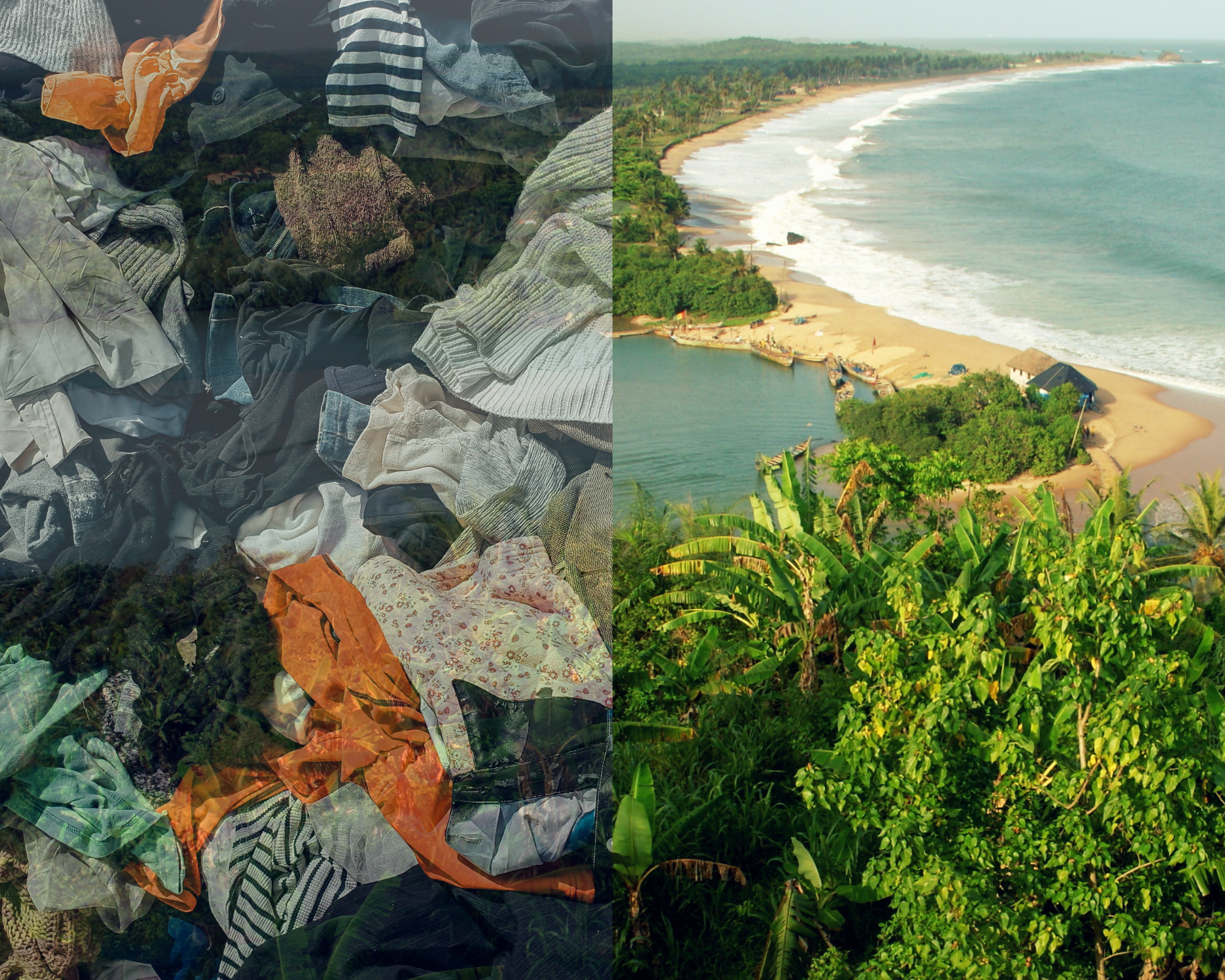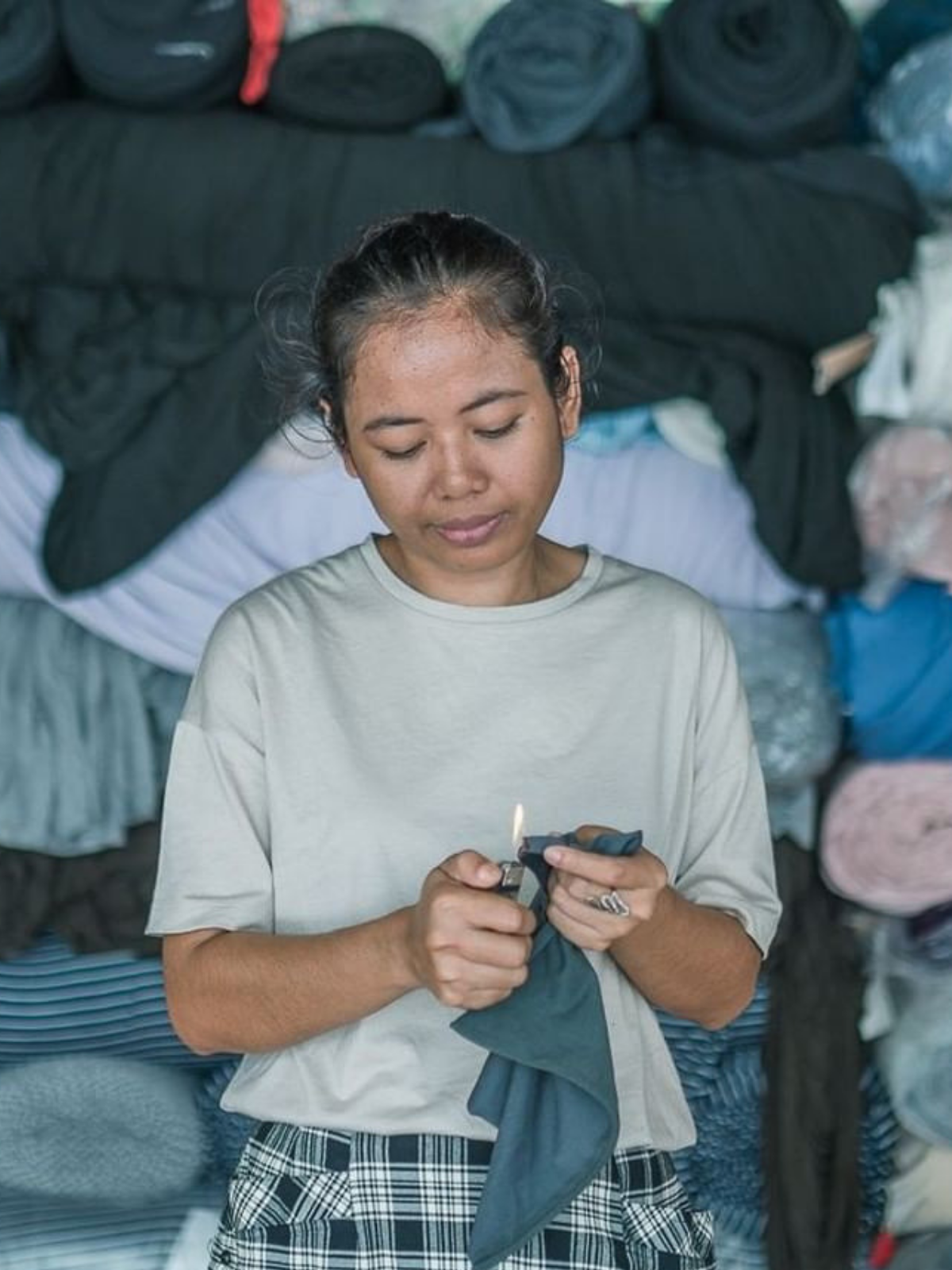“Too much clothing, not enough justice” is the rallying cry for The Or Foundation, a charity based between Ghana and the United States. Journalist Sophie Benson chatted with The Or Foundation for her new book The Sustainable Wardrobe, and here they dive into the grim realities of the second hand clothing market.
4 Q&As with Liz Ricketts of The Or Foundation
Based in Accra, Ghana, The Or Foundation is a non-profit organisation working towards a justice-led circular economy, supporting people working within, and impacted by, the global second hand supply chain.
1. Q: What do you consider to be the primary drivers for Accra and Kantamanto Market ending up as a dumping ground for the Global North?
A: In a word: colonialism. Under colonial rule, local citizens were required to conform to professional dress codes as defined by the British. People were required to swap their local dress for a suit and tie if they wanted to enter certain buildings or get certain jobs [and] the British utilised dress codes within schools and churches to demean indigenous dress. This created an artificial demand for Western-style clothing.
At first, access to Western clothing was quite restricted but this changed in the 1950s when the rise of mass-produced fashion transformed clothing into a consumable commodity. The second hand clothing trade was introduced to the Global North consumer, marketed as charity, allowing them to consume more clothes guilt free because there was now an outlet for their excess stuff.
After [economic changes] in the 1980s, employment within Ghana’s textile sector declined from a high of 25,000 jobs in 1975 to 5,000 in 2000. More second hand clothing began flooding into Ghana because locally made textiles and garments were no longer running at capacity and many who were employed in the local textile industry became second hand sellers. The great acceleration of fast fashion has only intensified the Global North’s reliance on Kantamanto as an outlet for excess clothing and in turn the lowering quality leaves Kantamanto retailers dependent on a system where they have to sell higher quantities of a cheaper product to stay out of debt.
2. Q: Why do consumers think people “need” our second hand clothes?
A: This is where colonialism comes in again, I’m afraid. It is difficult for people living in receiving countries across the Global South to represent themselves and their reality so most people living in the Global North have a skewed perception of what life is like in Ghana and across the African continent. There are not hordes of naked people in need of second hand clothes—and there are more seamstresses per capita in Ghana than anywhere in the Global North, all busy sewing custom, made-to-measure clothing. Many of the people who visit us from outside of Ghana remark on how well-dressed and stylish people are, surprised because this clashes with the poverty narrative they have been fed.
There are not hordes of naked people in need of second hand clothes—and there are more seamstresses per capita in Ghana than anywhere in the Global North, all busy sewing custom, made-to-measure clothing.
3. Q: Some people see the sheer volume of what arrives at the market and feel that it’s too big a problem to solve. What are the solutions?
A: Kantamanto serves as a model of what a sustainable fashion ecosystem looks like. Imagine if every store you shopped in had just as many sewing machines as clothing racks? This is Kantamanto. Consumers don’t come to Kantamanto looking to buy clothing off the rack; they come looking for material that they can customise. Right next to a retailer is a tailor who can make garments fit perfectly, dyers who can change the colour of stained clothes, and upcyclers who can combine garments to make one-of-a-kind creations. The mindset and skillset that make Kantamanto a hub of creativity are exactly what is needed.
On the ground in Ghana, we are working to catalyse a justice-led circular economy. This involves the development of new materials made from textile waste, debt relief for Kantamanto retailers, alternative livelihoods for young women who labour in modern day slavery carrying bales of clothing on their heads, and scientific research to determine how we can safely clean up the waste at the bottom of the sea.
4. Q: What should you do with your old clothes?
A: For that I have no simple solution. We simply don’t have the infrastructure to keep clothing … out of landfill. As a general rule, keep as much as you can as close to home as you can. Try to find charities that operate on a referral model so that your items will go to someone who has expressed an explicit need.
Learn to sew. You don’t need to make your own clothes, but knowing how to sew a button back on a shirt is a life skill that goes a long way to tackling fashion’s waste crisis.
Last but not least, listen to communities like Kantamanto. Sustainability is a language and a language can be lost within one generation. Unfortunately, most of the Global North has lost it. The good news? Communities like Kantamanto are still fluent. All we have to do is listen.


















